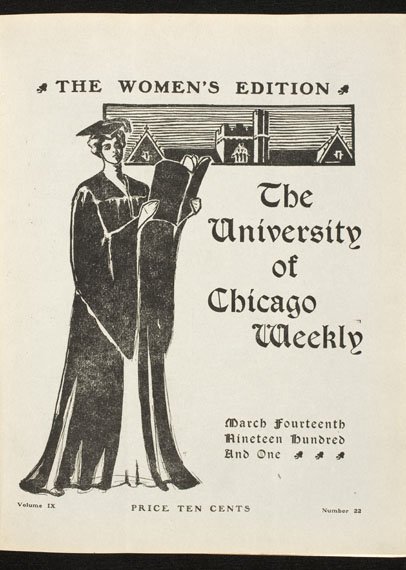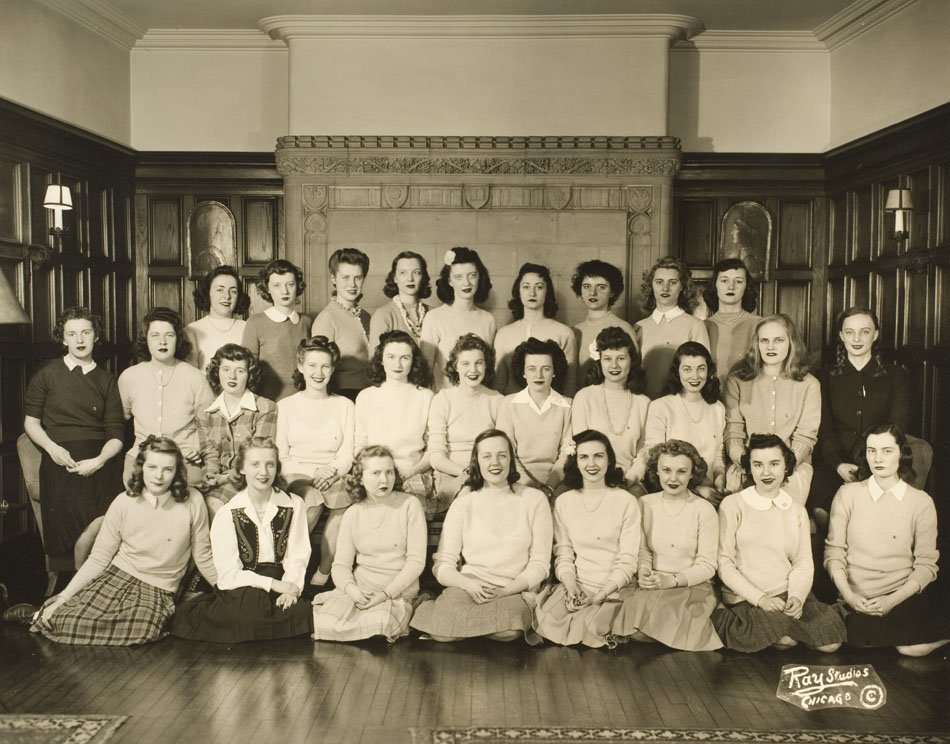Women's Clubs
Marion Talbot and other University administrators encouraged women students to form their social allegiances through the house system, to the dismay of those who wanted to bring national Greek letter sororities to campus. Sororities were divisive and elitist, Talbot feared, and would undermine local control over women's experience at the University. Talbot also discouraged organizations from publicly humiliating new members or otherwise undermining women's respectability on campus and in the wider community.
Despite her trepidation, Talbot acknowledged that small women's clubs could enhance women's lives by fostering academic achievement and mentorship. Academic clubs offered teas, parties, and other opportunities for young women to gather outside of the classroom. Of the five women's clubs at the turn of the century, Mortar Board was the most active. Academic success was the main criteria for membership, but club members also participated in community service outings, held social events, and organized an elaborate mentorship program wherein more senior women students helped newer students navigate the school. Club members followed strict rules of conduct and performed elaborate rituals meant to demonstrate their solidarity and respect for their club's traditions.
Despite their popularity, the clubs periodically faced criticism for their selectivity and potential to weaken campus unity. Another campus organization, the Women's Union, avoided such criticism. With Talbot's encouragement, the Women's Union was formed in 1901 to help all interested women students and faculty pursue "happy companionship" and other common aims. For a small quarterly fee, any woman on campus could join and attend the frequent lunch meetings, teas, and cultural events organized by and for campus women.



